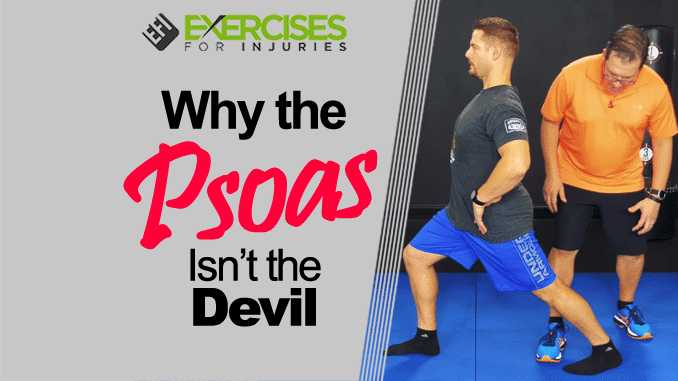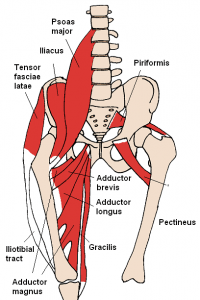
When understanding the human body, we often hear that the psoas is the devil. It’s the reason why so many people have trouble squatting. It’s related to sciatica, and tight psoas can lead to back pain. But it turns out that thinking of the psoas as an enemy might be a bit misguided.
When you look at all the facts, this muscle doesn’t seem nearly as sinister as we made it. There are some great benefits of having tight psoas! So what exactly is this mysterious muscle, and why does it get such a bad reputation? Keep reading to learn more about why the psoas isn’t the devil but instead your new best friend and not the devil.
Hey, it is Rick here. 
I am always reading other fitness professionals’ blogs and learning. One blog I have been reading of late is Mark Young’s.
I connected up with Mark to see if he would do a guest blog post, and he was happy to do so.
He did one on the psoas. As you know, the psoas is a massive issue regarding muscle imbalances in the lower body.
Take it away, Mark.
If you hadn’t noticed, the last couple of years has seen the hip flexors (particularly the psoas) become demonized to the extent that clubbing baby seals would probably win you more love than suggesting that someone deliberately strengthen the psoas.
While I’m the first to agree that the psoas can contribute to the dreaded anterior pelvic tilt and the associated problems, we should still consider that not everyone on the planet has this particular postural deviation. Some have a psoas that is underactive.
Symptoms of an Underactive Psoas
In this case, the lack of strength or activation of the psoas can cause the rectus femoris | 404 to contribute excessively to hip flexion (since the psoas isn’t doing its job) and result in overuse injuries to this muscle. As the rectus femoris becomes overused, trigger points or ischemic tissue can build-up, resulting in referred pain patterns. To take it one step further, if the rectus femoris is overactive, it can pull the patella more forcefully into the groove at the base of the femur resulting in anterior knee pain.
Dealing with an Underactive Psoas
The first step in dealing with knee pain is to identify all possible causes (which is obviously beyond the scope of this post), but if your investigation leads you to the psoas, here is a quick fix for you.
Step 1: Foam roll the rectus femoris, stopping on any “hot spots.” If the pain is at level 10, you should rest until it decreases to level 5 or 6, which should be considered normal. Sometimes, if the ischemic tissue is close to the knee, you may feel a referred pain in the knee itself when rolling. In other words, DON’T SKIP THIS STEP! Failure to deal with restoring proper muscle length and quality will prevent optimal resolution of the problem.
Step 2: Activate the psoas. I prefer to have my client lie on their back with their toes curled upward towards their shin and loop a resistance band over the toes and around a piece of equipment. Then I have them pull their knee towards their chest, making sure to go past 90 degrees and hold for 2-3 seconds at the top to engage the psoas fully. Perform ten repetitions per leg.
Generally, I’ll have a client do this during their warm-up and between all knee dominant movements in a workout (if necessary). If your assessment is correct, the results are often immediate.
Summarizing the Psoas
Perhaps the most significant take-home point from this is that we need to pay close attention to our assessments and not just protocols based on the most common scenario. And if you do find the offender to be the psoas, don’t be afraid to make it strong.
Mark Young is an exercise and nutrition consultant from Hamilton, Ontario, Canada.
You can check out his website and sign up for his free information-packed newsletter at http://www.MarkYoungTrainingSystems.com.
The other thing Mark has done is the Christmas Giveaway. Over the next few weeks, he will be giving away some stuff. He asked if I could help out, and I was happy to do so. I gave a 4 DVD set of Muscle Imbalances Revealed for his giveaway, so if you want to win some great stuff as Muscle Imbalances Revealed, head to his blog.





